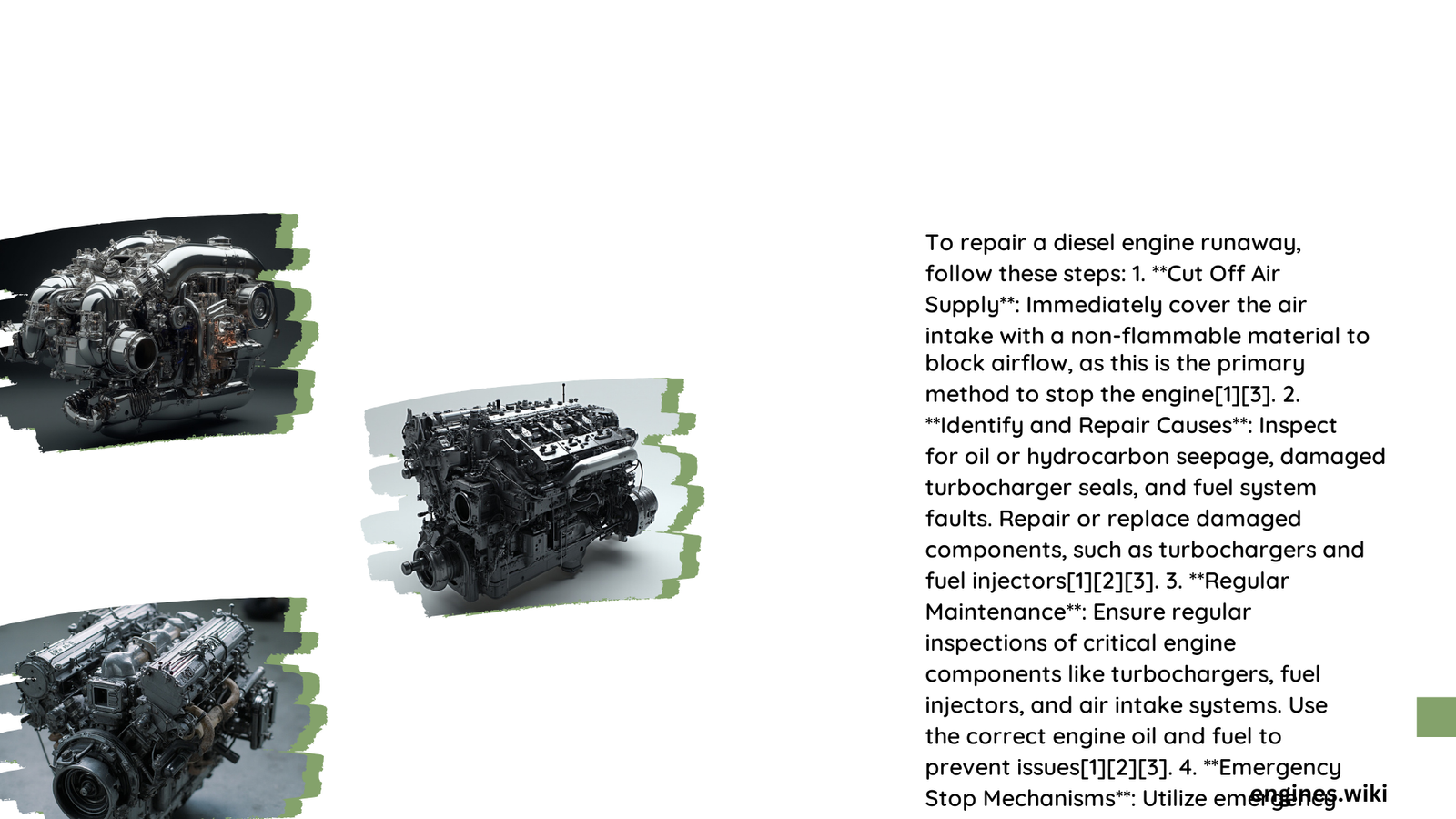Diesel engine runaway is a catastrophic mechanical phenomenon where an engine accelerates uncontrollably, potentially causing extensive damage. This critical situation occurs when the engine begins consuming alternative fuel sources like engine oil, leading to unmanageable RPM increases and potential total engine destruction. Immediate professional intervention and precise diagnostic techniques are crucial for successful diesel engine runaway repair.
What Causes Diesel Engine Runaway?
Diesel engine runaway can emerge from multiple complex mechanical failures:
Oil Contamination Pathways
- Turbocharger seal degradation
- Crankcase ventilation system malfunction
- Compromised piston ring integrity
Fuel System Vulnerabilities
- Leaking high-pressure fuel pumps
- Damaged fuel injector seals
- Uncontrolled fuel pressure regulation
How to Diagnose Diesel Engine Runaway?

Symptom Recognition Techniques
| Symptom | Diagnostic Indicator | Severity Level |
|---|---|---|
| Uncontrolled RPM Increase | Beyond recommended redline | Critical |
| Excessive Exhaust Smoke | Black/dense smoke emission | High |
| Abnormal Engine Sounds | Metallic grinding noises | Severe |
Diagnostic Procedure Steps
- Initial Assessment
- Perform comprehensive engine diagnostic scan
- Check turbocharger and fuel system integrity
-
Measure crankcase pressure levels
-
Detailed Inspection
- Examine air intake system for oil contamination
- Verify fuel injector functionality
- Assess internal engine component wear
What Are Repair Strategies for Diesel Engine Runaway?
Targeted Repair Approaches
Turbocharger Restoration
- Complete seal replacement
- Potential turbocharger unit replacement
- Estimated Cost: $500 – $5,000
Fuel System Rehabilitation
- Injector cleaning/replacement
- High-pressure pump evaluation
- Estimated Cost: $200 – $4,000
Engine Overhaul Options
- Component-level repair
- Complete engine replacement
- Estimated Cost: $5,000 – $30,000
How to Prevent Future Runaway Scenarios?
Proactive Maintenance Strategies
- Regular Inspection Protocols
- Quarterly comprehensive engine diagnostics
- Oil quality and contamination checks
-
Systematic component wear assessment
-
Critical Component Monitoring
- Track turbocharger performance metrics
- Monitor fuel system pressure consistency
- Evaluate crankcase ventilation efficiency
Expert Recommendations
Best Practices for Diesel Engine Health
- Use manufacturer-recommended lubricants
- Maintain strict service interval schedules
- Invest in high-quality replacement components
- Train operators on early warning sign recognition
Cost-Effective Prevention Techniques
- Implement predictive maintenance programs
- Utilize advanced diagnostic scanning tools
- Develop comprehensive maintenance documentation
Technical Considerations
Advanced Diagnostic Technologies
- Computerized engine analysis systems
- Pressure testing equipment
- Thermal imaging diagnostics
Professional Intervention Thresholds
- Immediate shutdown procedures
- Emergency repair protocol activation
- Certified mechanic consultation
Conclusion
Successful diesel engine runaway repair demands technical expertise, precise diagnostic capabilities, and systematic restoration approaches. By understanding root causes, implementing preventive strategies, and responding quickly to warning signs, operators can mitigate potential catastrophic engine failures.
